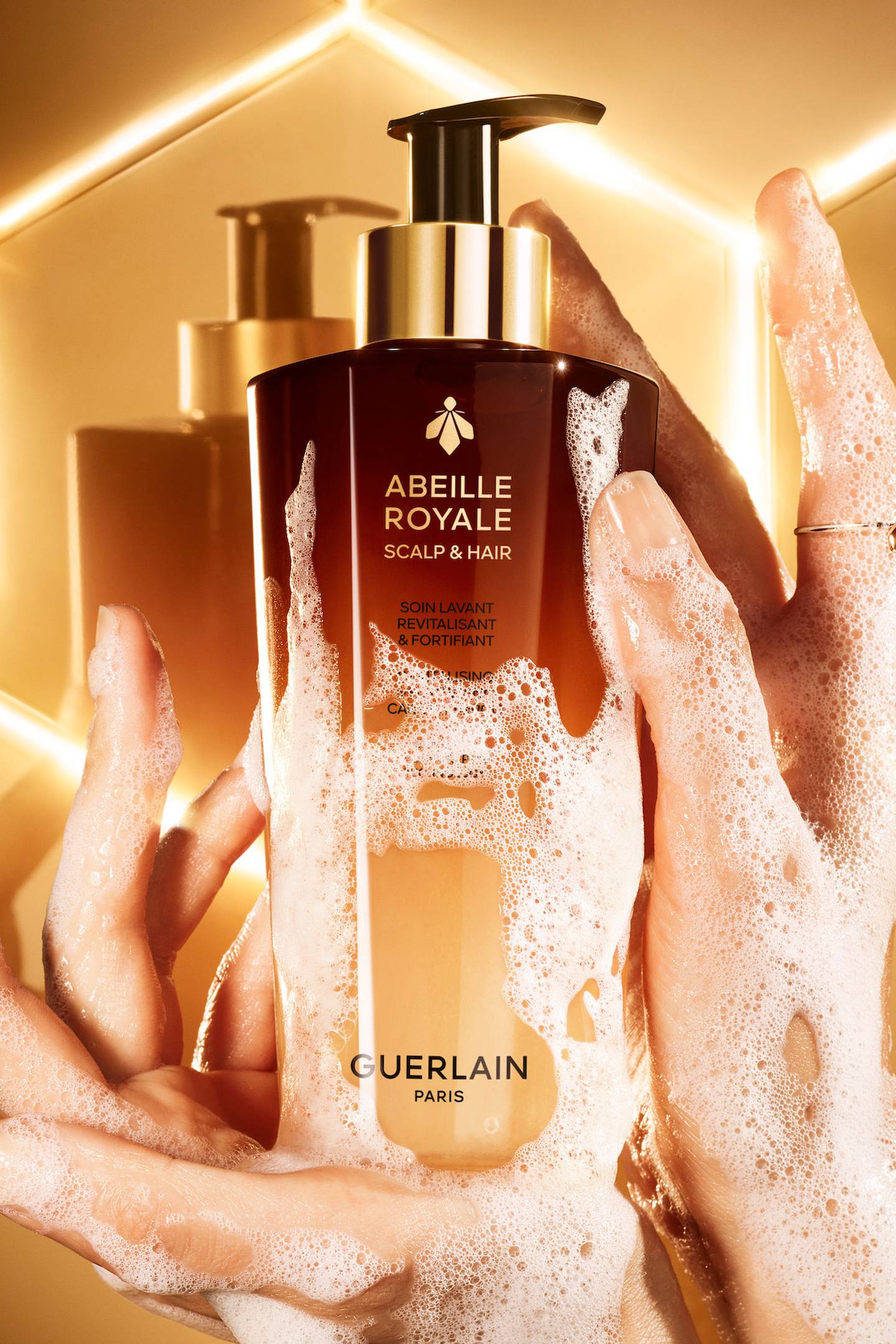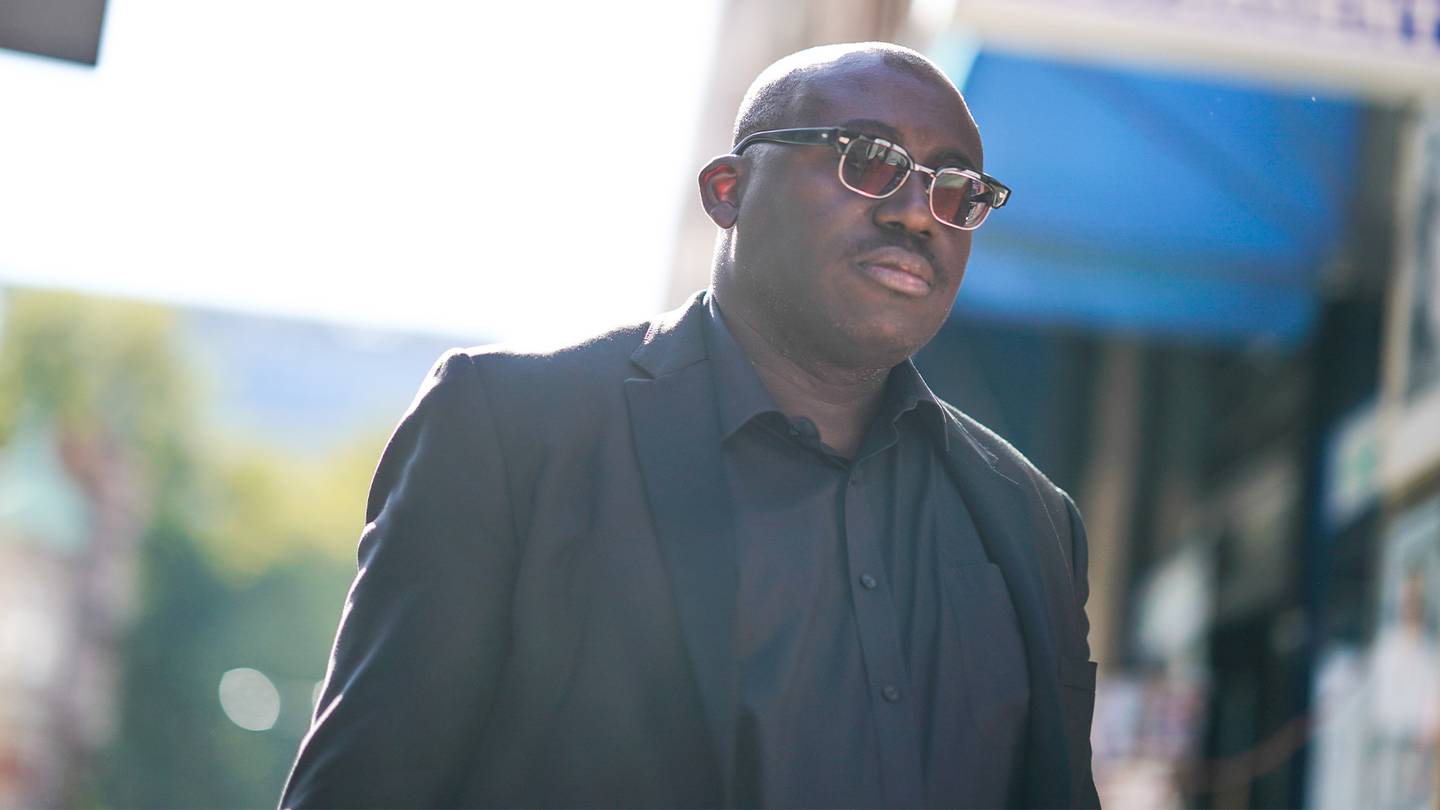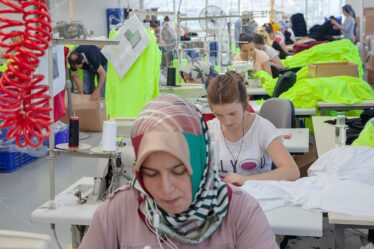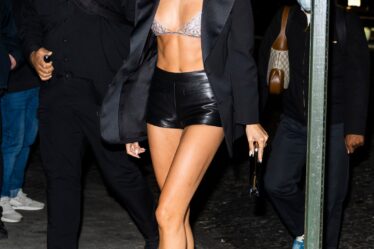
This week, Nike completed its first public sale of non-fungible tokes under its own brand, showing that web3 may be down but not out.
The sneaker giant never used the term “NFT” in the lead up to the launch, instead describing them as virtual creations. But NFTs, as in unique blockchain-based assets, are exactly what Nike’s new creations are. Based on publicly available blockchain data, Nike sold more than 97,000 of the tokens to nearly 53,000 members of its web3 platform, .Swoosh. That might not qualify as a blowout victory. There were slightly more than 106,000 boxes available. But it’s an arguable success at a time when the NFT market remains well below its late 2021 highs and many are questioning the technology’s future.
What buyers purchased were digital sneaker boxes they can open in the near future to reveal a virtual shoe inspired by Nike’s Air Force 1, called the Our Force 1. With each one priced at $19.82 — a reference to the year of the Air Force 1′s debut — Nike brought in nearly $2 million in sales.
For a company that reported revenue of $12.4 billion in its last quarter alone, it’s barely enough to register. But the sale was just the start of a larger plan to expand Nike’s influence into new digital realms, and it illustrates how NFTs can still offer a way for brands to build and connect with a community — if they do it right.
Prior to the sale, Nike spent months building awareness and educating its customers about what .Swoosh is, hosting sessions on its SNKRS app and live events in select cities around the US. It emphasised aspects like co-creation opportunities and the inspiration behind its virtual shoes, leaving out the crypto jargon.
Not every brand may go to the same lengths, but when dealing with what’s essentially a new product category that’s unfamiliar to shoppers, it can make a difference to take the time and care to explain the benefits. Nike, like others, is using the platform as a loyalty programme whose members will have access to special products and experiences, even indicating its digital goods could be used in video games in the future.
The company looks to be trying to make good on that last promise already. The day after the sale ended, Nike announced a partnership with EA Sports, publisher of hugely popular game franchises like FIFA and Madden NFL, and said the tie-up will give .Swoosh members a new way to express their personal style, suggesting they might be able to use their Our Force 1s in EA’s titles in some way. Further details will be revealed in the coming months, Nike said in a release.
Rather than targeting the crypto faithful, as its subsidiary RTFKT has done, Nike went after its most loyal fans and made it easy for them to participate. Instead of leaving them to navigate the process of setting up a crypto wallet, Nike automatically created one for anyone who signed up for a .Swoosh account. It sold the Our Force in dollars, not cryptocurrency, and at an attainable price, too. When Adidas launched its NFTs in 2021, they cost the equivalent of about $800 at the time. Adidas brought in more money initially but it also led to some treating the NFT as a speculative asset — something Nike said explicitly it wanted to avoid — and created expectations of rewards that could be difficult to satisfy.
Nike’s dive into NFTs wasn’t flawless. An early access sale planned for May 8 had to be pushed back a week. When it did go live, the site crashed, forcing Nike to extend the availability window. The general access sale that began on May 24 encountered its own technical difficulties. These sorts of wrinkles remain common in web3 and create a frustrating customer experience. Brands still have work to do to smooth them out.
In the meantime, Nike has company trying to keep the web3 dream alive. Rivals such as Adidas and Puma continue investing in their web3 projects. In March, Gucci signed a multi-year partnership with Yuga Labs, the company behind web3 projects such as Bored Ape Yacht Club, indicating a long-term commitment to the space. And Prada just entered its second year of NFT drops as part of its Timecapsule series. (Outside the fashion world, Starbucks continues to forge ahead with its own NFT loyalty programme.)
Some of the shine may have come off these efforts as the crypto market has struggled and the excitement in tech turns towards generative AI, but they reveal that companies still see value in web3 technology. For Nike, the hope appears to be that .Swoosh will bring its members further into Nike’s ecosystem of products, online as much as offline, and help it develop new relationships through digital goods. Members tend to spend more, after all, and as virtual spaces like video games continue to attract more users, it can’t hurt to find ways for fans to bring their Nike products into them.
THE NEWS IN BRIEF
FASHION, BUSINESS AND THE ECONOMY
LVMH shelves plans for Rodeo Drive hotel after local opposition. While some votes remain to be counted, LVMH confirmed that two measures on the Cheval Blanc Beverly Hills project have fallen short by a ‘narrow margin.’ The final results will be certified on June 2.
Capri cuts revenue forecasts as US demand wavers. Michael Kors parent Capri Holdings Ltd on Wednesday cut its annual sales forecast as demand for its handbags and shoes weakens in the United States, sending its shares down nearly 9 percent in early trading.
Nordstrom beats quarterly sales estimates as apparel demand holds up. Nordstrom Inc beat market estimates for first-quarter sales on Wednesday as demand from wealthy shoppers cushioned a wider, inflation-driven slowdown in spending on clothing and accessories.
Macy’s falls after cutting outlook as demand trends worsen. Macy’s Inc. said earnings will be weaker than previously expected for the full year, underscoring the uncertainty around US consumer spending through the remainder of 2023.
Retailer Asos falls after FTSE 250 relegation. Asos, the British online fashion pioneer valued at more than £7 billion ($8.8 billion) just over two years ago, has been relegated from the FTSE 250 index of mid-sized companies, illustrating the sharp decline in its fortunes.
Swiss watch exports to the US suffer the first drop In two years. Monthly Swiss watch exports to the US declined for the first time in more than two years, signalling a slowdown in demand from the biggest market for pricey timepieces.
UK shop price inflation strikes new record high. British shop price inflation picked up this month to reach its highest rate since industry records began in 2005, a survey showed on Tuesday.
Africa’s top clothes retailer reports decline in earnings and leadership change. Pepkor Holdings Ltd. replaced the head of its Ackermans unit after Africa’s largest clothing retailer posted a drop in first-half earnings as it failed to get the right summer fashion mix.
Walmart is sticking with Pride merch despite Target controversy. “We have merchandise that we sell all year that supports different groups,” Walmart chief merchandising officer Latriece Watkins told reporters Wednesday. “In this particular case, we haven’t changed anything in our assortment.”
EU parliament backs company checks on suppliers for human rights abuses. Parliament voted 366 in favour, with 225 against, though an attempt to strengthen the obligation of company boards and directors to ensure compliance with the new law failed.
Turkey’s apparel industry outlines post-election priorities for the president. The country’s runoff election came to an end on May 28 with the incumbent Recep Tayyip Erdogan securing another term, prompting calls for economic stability from sector leaders in the fashion manufacturing hub.
Stop dumping your cast-offs on us, Ghanaian clothes traders tell the EU. With 100 tons of clothing from the West discarded every day in Accra, ‘fast fashion’ brands must be forced to help pay for the choking textile waste they create, environmentalists say.
THE BUSINESS OF BEAUTY

Guerlain launches hair care range. It comes as the brand sees consumers investing more in hair products and scalp maintenance, said Cecile Koenig, Guerlain’s director of international skin care marketing.
PEOPLE

Edward Enninful to step away from his role as British Vogue’s editor-in-chief next year. Enninful will transition to a new global advisory role, while “having the freedom to take on broader creative projects,” he said in a memo to staff.
Farfetch reshuffles new Guards Group, Off-White leadership as co-founders exit. New Guards Group co-founders Davide De Giglio and Andrea Grilli are exiting the company, owner Farfetch announced Thursday.
Ann Demeulemeester confirms Ludovic De Saint Sernin’s exit, naming new designer. The brand named Stefano Gallici as creative director after Ludovic de Saint Sernin exited the brand over “different visions” with owner Claudio Antonioli.
Nike appoints Jared Carver as Converse CEO. The veteran executive, formerly vice president of the Nike-owned brand’s North America business, will succeed Scott Uzzell as president and chief executive, in the latest move of a wider leadership shuffle at Nike.
Bally design director Simone Bellotti was promoted to lead studio. Bally is hiring from within following the departure of former creative director Rhuigi Villaseñor earlier this May.
MEDIA AND TECHNOLOGY

Vogue World heads to London this September. Condé Nast will stage the second edition of Vogue World in London this autumn. Set to take place on Sept. 14. at London’s Theatre Royal Drury Lane, the event will serve as an unofficial kick-off to London Fashion Week.
Compiled by Sarah Elson.



